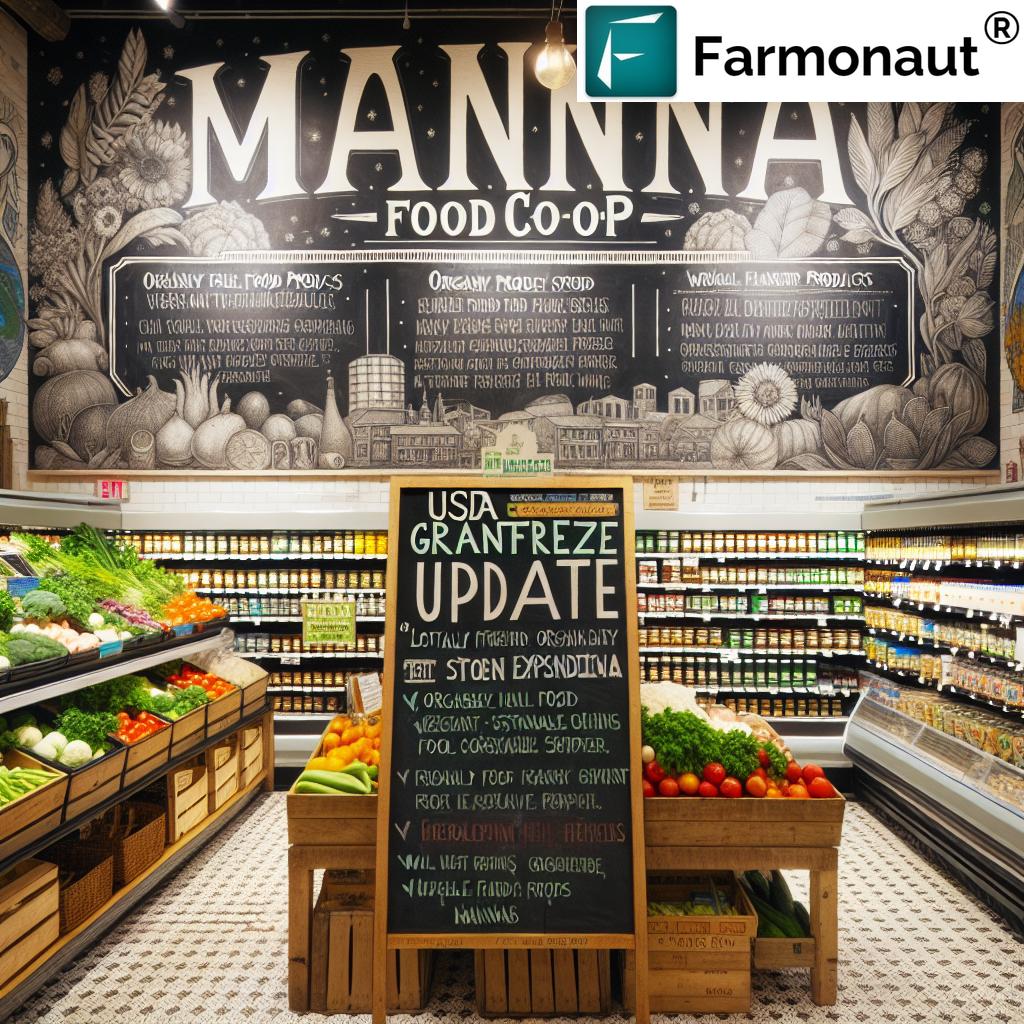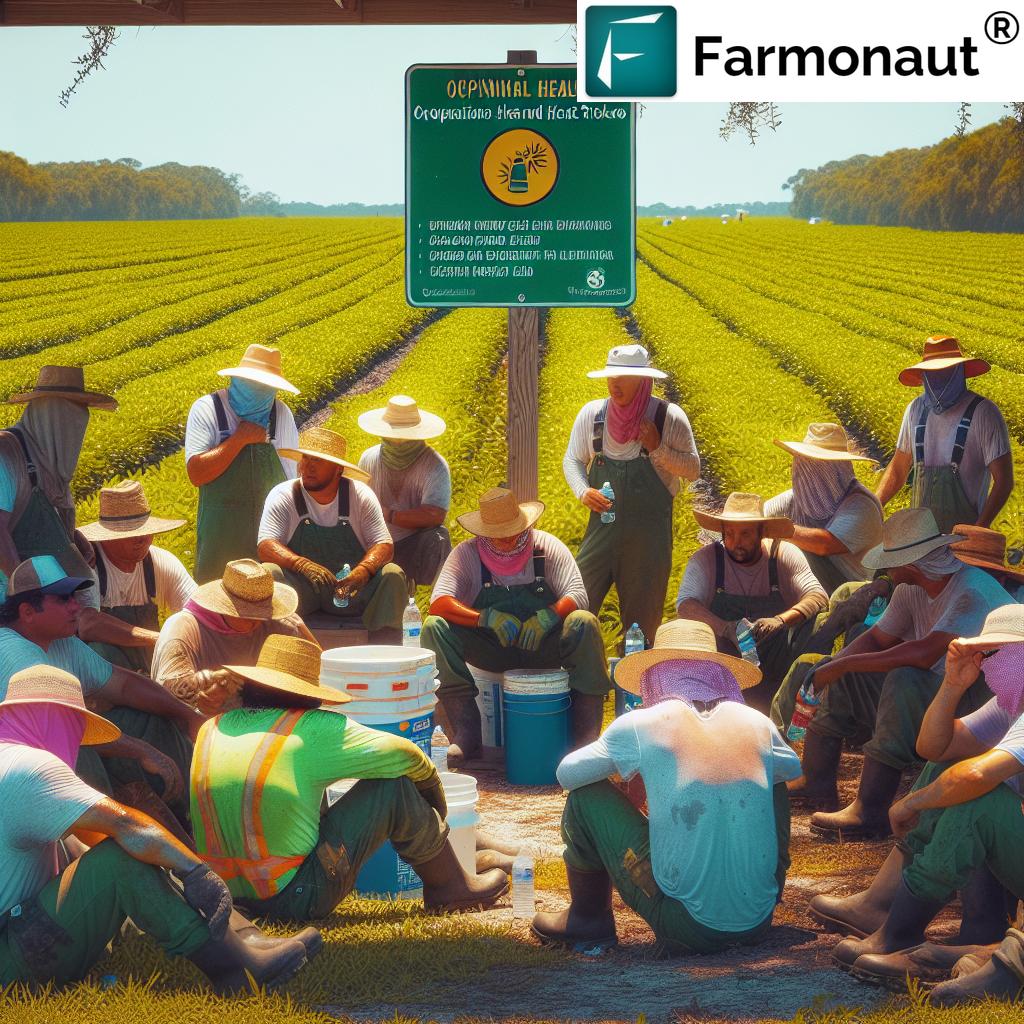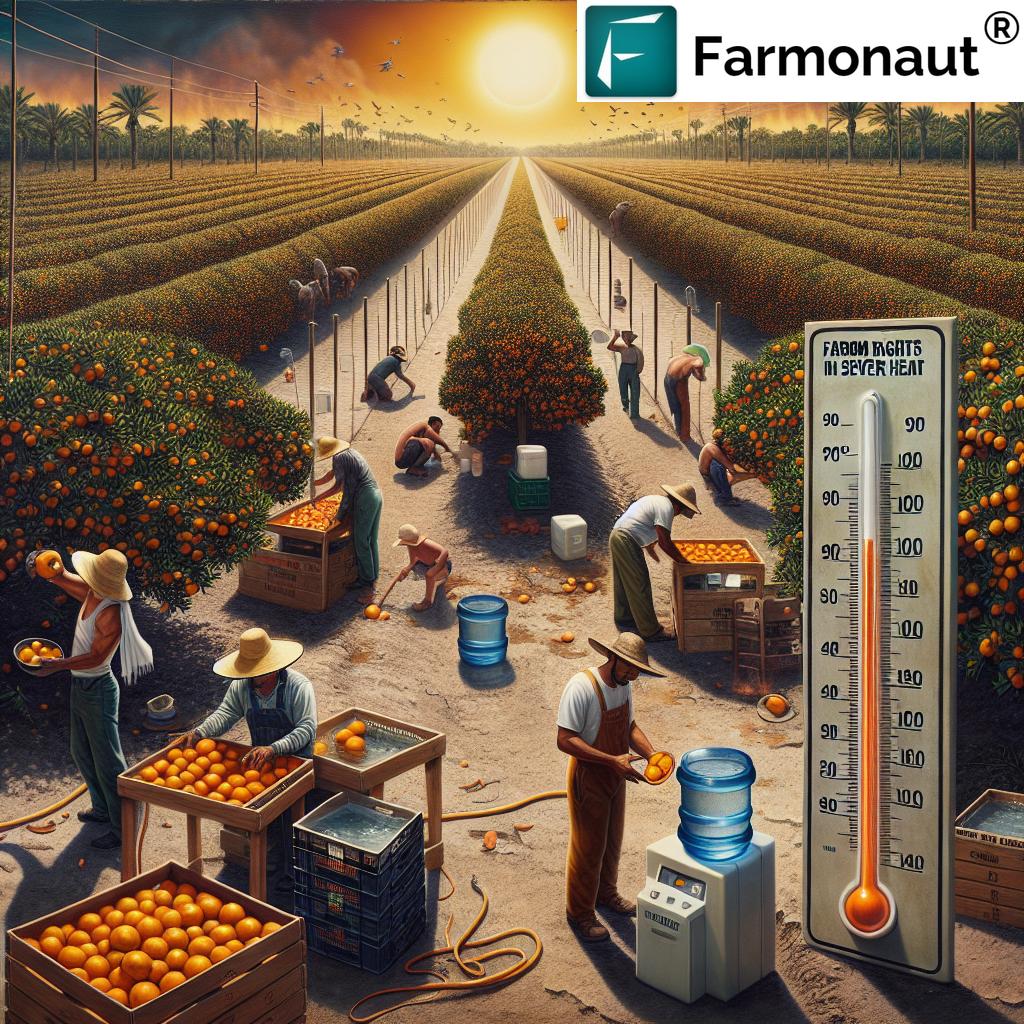Santa Barbara Farmers Market: Sustainable Food Guide 2025
Summary: Farmers Markets: A Vital Hub for Sustainable Agriculture and Community Resilience in 2025
“Santa Barbara farmers markets feature over 130 local vendors committed to sustainable agriculture and eco-friendly practices.”
Introduction: Farmers Markets and Sustainability
Farmers markets have become a cornerstone in the landscape of California’s sustainable agriculture, offering direct, transparent routes from producer to consumer. As we move through 2025, their role in strengthening community resilience, supporting eco-friendly practices, and promoting regional economies is more crucial than ever.
The santa barbara farmers market—from the famed downtown santa barbara farmers market to the lively santa barbara saturday farmers market—serves as a model for sustainably grown food and robust community hubs. These markets are not just venues; they represent vibrant ecosystems where producers, artisans, and consumers intersect, fostering environmentally responsible farming and dynamic local economies.
Farming, Farmers & Markets: The Landscape in 2025
The agricultural landscape in 2025 continues to evolve rapidly. Industrial farming faces mounting challenges: climate change, unpredictable weather patterns, and frequent supply chain disruptions have exposed vulnerabilities and highlighted the need for diversified, local food systems.
Farmers markets, including those in santa barbara, santa clara, and santa ana, have become essential for farmers seeking to maintain viability by avoiding intermediaries, commanding fair prices, and reinvesting directly into their land and operations. At the same time, consumers benefit from fresh, seasonal produce and a direct connection to the source of their food.
Santa Barbara Farmers Market: An Exemplary Model of Sustainability
The santa barbara farmers market—across its multiple locations—stands as an exemplary model in California: it demonstrates how local agricultural systems can foster resilience, encourage eco-friendly farming methods, and serve as vibrant community hubs.
Local farmers here have adopted regenerative agriculture, advanced organic farming techniques, and implemented sophisticated water-conserving irrigation—all pivotal to thriving in the face of increasingly unpredictable weather and climate change.
A walk-through at the downtown santa barbara farmers market on a saturday reveals stalls brimming with fresh produce, artisanal goods, and culturally diverse fare, all cultivated or crafted within the regional agricultural network.
“In 2025, 85% of produce at Santa Barbara markets is sourced within a 50-mile radius, reducing food miles significantly.”
Santa Barbara Farmers Market Sustainability Snapshot
To illustrate the commitment to sustainability, resilience, and community, here is a comparative snapshot of major Santa Barbara markets:
| Market Name | Location | Days/Hours Open | % Local Vendors | Organic Offerings (%) | Key Sustainable Practices | Community Programs | Avg. Weekly Visitors |
|---|---|---|---|---|---|---|---|
| Downtown Santa Barbara Farmers Market | Santa Barbara (State Street) | Sat, 8:30am–1pm | 95% | 75% | Composting, Plastic Reduction, Efficient Irrigation | Cooking Demos, Nutrition Workshops, Kids’ Activities | 6,500 |
| Goleta Farmers Market | Camino Real Marketplace | Sun, 10am–2pm | 90% | 70% | Solar Power, Zero-Waste Initiatives | Farmer Panels, Garden Tours | 2,800 |
| Montecito Farmers Market | 1100 Coast Village Road | Fri, 8am–11:15am | 85% | 60% | Eco-Packaging, Native Plant Sales | Sustainability Lectures, Art Exhibits | 1,100 |
Downtown Santa Barbara Saturday Farmers Market: A Hub for Community & Fresh Produce
The downtown santa barbara farmers market is not just a marketplace—it is a dynamic ecosystem where farmers, artisans, and consumers intersect. Set in the heart of downtown Santa Barbara, this Saturday market offers a unique space for small-scale producers to showcase diverse goods ranging from heirloom crops to innovative plant-based products.
- Direct-to-consumer sales: Empower producers and increase transparency for consumers.
- Fair prices, reduced intermediaries: Allow farmers to earn a higher share, which in turn helps them command economic security and reinvest in their land.
- Community events & education: Nutrition workshops, cooking demonstrations, and sustainability talks enhance community engagement.
- Environmental stewardship: Composting, plastic reduction, and efficient irrigation methods are prioritized.
This model of a community hub truly represents how markets can foster both economic and cultural resilience.
Santa Clara Farmers Market: Integrating AgTech with Tradition
The santa clara farmers market showcases the exciting intersection between innovative ag-tech and traditional farming. Situated close to Silicon Valley, farmers here regularly integrate cutting-edge technologies to boost crop yields sustainably:
- Sensor-based soil monitoring: Leveraging soil data for precision irrigation and fertilization, thus conserving water and minimizing chemical use.
- AI-driven crop management: Using advanced analytics to enhance productivity, manage pest threats, and optimize harvest timing.
Local communities benefit through interactive workshops, nutrition education, and demonstrations that deepen understanding of both food sources and sustainable methods.
Farmers Market Santa Ana: Cultural Heritage and Food Access
Santa Ana, a city rich in agricultural history and known for its vibrant immigrant communities, is home to a farmers market where tradition and food sovereignty are celebrated.
- Heirloom and traditional crops: Many vendors are first- or second-generation farmers with deep, generational knowledge about crops well-suited to the regional climate and cultural heritage.
- Economic empowerment: The market acts as a business incubator, creating opportunities for local producers to enter the food economy directly, fostering economic resilience in underserved areas.
- Cultural preservation: Events, cooking demonstrations, and diverse produce showcase the region’s rich food traditions.
In this dynamic, market-driven environment, consumers are given both access to unique foods and the chance to support ongoing biodiversity.
Climate Resilience & Eco-Friendly Practices in 2025
In 2025, the impact of climate change and unpredictable weather patterns has pushed farmers markets to the forefront of resilience-building strategies. Local farmers are increasingly adopting methods that emphasize regenerative agriculture, including:
- Cover cropping & no-till farming: Preserving soil health and sequestering carbon (learn more about carbon footprinting with advanced monitoring).
- Precision irrigation: Reducing water use by targeting irrigation only where crops need it most—a critical adjustment for weather-challenged California agriculture.
- Organic pest management: Natural alternatives to synthetics protect both environment and consumer safety.
- Composting & waste minimization: Diverting organic waste from landfills and building healthy soils.
We can see, markets are more than just a point of sale for goods; they are vital nodes where the broader agricultural network shares best practices and embraces sustainable stewardship of land and resources.
Farmonaut Satellite Technology: Supporting Agriculture Sustainability
To enhance the resilience and productivity of agricultural systems, we at Farmonaut provide advanced satellite-based monitoring and AI-powered advisory systems accessible via web and mobile devices. This real-time monitoring allows farmers to assess soil conditions, detect vegetation stress, and optimize their inputs, directly supporting the adoption of regenerative and organic methods.
– The Jeevn AI Advisory System delivers customizable strategies based on weather, crop type, and satellite data, significantly improving resource efficiency and sustainability.
– Our blockchain-based traceability creates transparency in the food supply chain, benefiting both producers and consumers. For more on traceability’s impact, visit our traceability platform.
– Our environmental impact monitoring helps track carbon emissions and implement strategies that lower the carbon footprint in agriculture (carbon footprinting solutions).
For developers: Access Farmonaut’s powerful API to integrate satellite and weather data directly into your agricultural models via our dedicated API portal and API developer docs.
Regional Impact & Food System Hubs
Farmers markets like those in santa barbara, santa clara, and santa ana demonstrate how strategic integration in urban and suburban planning can serve as critical nodes in regional agricultural networks. The benefits include:
- Reduced carbon footprint: With 85% of produce sourced within 50 miles, food miles shrink, reducing emissions from transport and storage.
- Support for regional food webs: Direct local sales reduce reliance on long supply chains and facilitate rapid adjustments during chain disruptions or climate events.
- Economic resilience: When producers keep a larger share of sales, they can reinvest in eco-friendly tools and methods.
- Biodiversity enhancement: Markets support hundreds of diverse, regionally adapted crops—essential for climate resilience.
As California continues to advance, integrating large-scale farm management tools like Farmonaut Agro Admin App amplifies efficiency, traceability, and sustainability across food hubs (from micro-farms to regional cooperatives).
Building Community Resilience Across California
Community resilience goes beyond food access—it’s about empowering local people, respecting cultural traditions, and building networks of mutual support. The farmers markets of santa barbara, santa clara, and santa ana foster resilience in diverse ways:
- Nutrition security: Affordable, fresh food for all income levels, with market programs supporting EBT/SNAP users and nutrition outreach.
- Cultural celebration & education: Through music, art, and cooking workshops, the markets celebrate local heritage.
- Disaster adaptation: By decentralizing food supply chains and supporting local systems, markets reduce vulnerability to global disruptions.
The Role of Consumers in Sustainable Markets
Consumers are vital participants in market-driven sustainability. Through our choices at the santa barbara farmers market and others, we:
- Encourage responsible farming: Preferring organically grown and locally sourced goods propels demand for better practices.
- Promote transparency and trust: Advocating traceable supply chains fosters integrity and confidence (read more on blockchain-based traceability for food).
- Strengthen local economies: Supporting nearby producers keeps money within the region, creating local jobs and supporting ancillary community services.
- Play a part in climate stewardship: By choosing local, low-impact foods, carbon emissions associated with our diets decrease.
- Participate in civic life: Markets serve as public spaces that foster dialogue, cultural exchange, and mutual support.
Farmonaut Subscriptions: Accessible Technology for All
We democratize access to advanced satellite monitoring and AI-driven advisory at affordable rates for individual farmers, businesses, and government agencies.
Our pricing model allows users to scale up from precision management of small plots to continent-spanning agricultural tracking.
Get started with Farmonaut and optimize your agricultural operations for sustainability and resilience below:
Specialized tools—like those for satellite-based crop loan and insurance verification or smart fleet management—enable smarter, more secure, and sustainable farming.
FAQ: Santa Barbara Farmers Market & Sustainable Food
What makes the Santa Barbara Farmers Market unique in 2025?
Its high proportion of local vendors (over 95%), focus on regenerative and organic agricultural practices, and vibrant community events make it a model for sustainability, economic resilience, and cultural vitality.
How do farmers markets support resilience in California?
By empowering local producers with direct sales, promoting biodiversity, reducing food miles, and offering vital community nutrition and education programs—markets strengthen regional food security against supply chain disruptions.
Which eco-friendly practices are most common at Santa Barbara area markets?
- Composting and zero-waste initiatives
- Plastic reduction and reusable packaging
- Carbon footprint minimization
- Support for crop diversity and soil health
- Efficient, precision irrigation technologies
How can Farmonaut help farmers at these markets?
We provide satellite-driven crop and soil monitoring, AI-based real-time advisory, blockchain-based traceability for food authenticity, weather-informed crop insurance support, and fleet management—helping farmers enhance productivity, embrace sustainability, and maintain resilience in rapidly changing environments.
Why is locally sourced food important for sustainability?
Locally sourced food minimizes carbon emissions by reducing transport distances, preserves regional biodiversity through adapted crop varieties, keeps money circulating within local economies, and strengthens connections between consumers and producers.
Are there digital tools to help regional markets?
Yes—tools for fleet/resource management, traceability, and environmental impact tracking (Fleet Management), satellite crop health monitoring, and climate-adaptive advisory solutions are transforming how markets manage operations and strengthen their supply chain resilience.
Conclusion: The Future of Markets in Sustainable Systems
Farmers markets such as the santa barbara saturday farmers market, downtown santa barbara farmers market, santa clara farmers market, and farmers market santa ana are essential to the revitalization of sustainable agricultural systems in California and beyond. They serve as both vital hubs for fresh food, sustainability education, and community resilience, and as testing grounds for ag-tech innovations.
By integrating farmers markets into urban and regional planning, California can ensure food systems are adaptive, resilient, and capable of sustaining both economic and ecological priorities as we move toward 2025 and beyond.
Supporting these markets supports a future where communities thrive, farmers prosper, and our environment is protected for generations to come.












